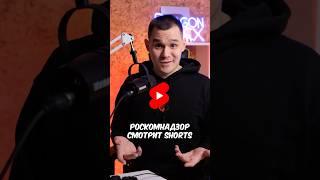
Buying vs Short Covering: Understanding the Key Differences #trading #dailyvatives #stockmarket
Follow Us for More Stock Insights:
Telegram: https://t.me/dailyvatives
WhatsApp Channel: https://whatsapp.com/channel/0029VakdLVX7tkj1v9Ympl1U
Instagram: https://www.instagram.com/_dailyvatives
Website: https://www.dailyvatives.com
Buying vs Short Covering: Understanding the Key Differences
In today's video, we’ll break down one of the most crucial topics in stock trading: Buying vs Short Covering. Both of these actions can affect a stock’s price movement, but they have different implications for traders and investors.
What Is Buying?
When we talk about buying stocks, we’re referring to the traditional method of acquiring shares with the expectation that the price will go up. This is a common strategy for long-term investors who believe in the growth potential of a company. Buying increases demand for a stock, pushing prices higher.
Key Insight: A sustained buying trend typically signals confidence in the company’s future and drives bullish market sentiment.
What Is Short Covering?
On the other hand, short covering occurs when traders who have bet against a stock (short sellers) buy back shares to close their short positions. This can happen when the stock price rises, and short sellers want to avoid further losses. Short covering usually triggers a quick price spike, often called a short squeeze.
Key Insight: Short covering can create artificial demand, leading to a sudden price surge, but it doesn’t always indicate long-term strength.
When Does Short Covering Happen?
Short covering often happens when:
There’s unexpected positive news.
Earnings reports beat expectations.
Market sentiment shifts due to external factors.
In these cases, short sellers rush to close their positions, creating a rapid upward movement in stock prices.
How to Identify Short Covering vs Buying?
While both actions result in increased stock prices, buying tends to lead to gradual, sustained price growth. In contrast, short covering causes sharp, short-term price spikes, which may not be sustainable.
Impact on Traders and Investors
For long-term investors, buying is generally more stable and provides value growth over time. Short-term traders, however, might capitalize on short covering rallies to take advantage of quick price movements, but they must be cautious of the volatility it brings.
Conclusion:
Understanding the difference between buying and short covering helps you navigate market trends better. Keep an eye on price movements, volume, and external factors to determine whether you’re witnessing long-term buying or a short-covering rally.
Follow Us for More Stock Insights:
Telegram: https://t.me/dailyvatives
WhatsApp Channel: https://whatsapp.com/channel/0029VakdLVX7tkj1v9Ympl1U
Instagram: https://www.instagram.com/_dailyvatives
Website: https://www.dailyvatives.com
Disclaimer:
This video is for informational purposes only. Please consult a financial advisor before making any investment decisions. Dailyvatives is not responsible for any financial profit or loss resulting from your investments.
Relevant Keywords:
Buying vs short covering, short covering vs buying, stock market buying trends, short covering stocks, short covering squeeze, short squeeze explained, short selling vs buying, stock price movement, short covering impact, investing in short covering, short seller market trends, long-term stock buying, day trading strategies.
Hashtags:
#ShortCovering #StockBuying #StockMarketAnalysis #StockTrading #ShortSqueeze #ShortSelling #Investing #StockPriceMovement #DayTrading #FinancialMarket #TradingStrategies #Nifty #Sensex #StockMarketToday #Dailyvatives #LongTermInvestment #BullMarket #MarketTrends
Telegram: https://t.me/dailyvatives
WhatsApp Channel: https://whatsapp.com/channel/0029VakdLVX7tkj1v9Ympl1U
Instagram: https://www.instagram.com/_dailyvatives
Website: https://www.dailyvatives.com
Buying vs Short Covering: Understanding the Key Differences
In today's video, we’ll break down one of the most crucial topics in stock trading: Buying vs Short Covering. Both of these actions can affect a stock’s price movement, but they have different implications for traders and investors.
What Is Buying?
When we talk about buying stocks, we’re referring to the traditional method of acquiring shares with the expectation that the price will go up. This is a common strategy for long-term investors who believe in the growth potential of a company. Buying increases demand for a stock, pushing prices higher.
Key Insight: A sustained buying trend typically signals confidence in the company’s future and drives bullish market sentiment.
What Is Short Covering?
On the other hand, short covering occurs when traders who have bet against a stock (short sellers) buy back shares to close their short positions. This can happen when the stock price rises, and short sellers want to avoid further losses. Short covering usually triggers a quick price spike, often called a short squeeze.
Key Insight: Short covering can create artificial demand, leading to a sudden price surge, but it doesn’t always indicate long-term strength.
When Does Short Covering Happen?
Short covering often happens when:
There’s unexpected positive news.
Earnings reports beat expectations.
Market sentiment shifts due to external factors.
In these cases, short sellers rush to close their positions, creating a rapid upward movement in stock prices.
How to Identify Short Covering vs Buying?
While both actions result in increased stock prices, buying tends to lead to gradual, sustained price growth. In contrast, short covering causes sharp, short-term price spikes, which may not be sustainable.
Impact on Traders and Investors
For long-term investors, buying is generally more stable and provides value growth over time. Short-term traders, however, might capitalize on short covering rallies to take advantage of quick price movements, but they must be cautious of the volatility it brings.
Conclusion:
Understanding the difference between buying and short covering helps you navigate market trends better. Keep an eye on price movements, volume, and external factors to determine whether you’re witnessing long-term buying or a short-covering rally.
Follow Us for More Stock Insights:
Telegram: https://t.me/dailyvatives
WhatsApp Channel: https://whatsapp.com/channel/0029VakdLVX7tkj1v9Ympl1U
Instagram: https://www.instagram.com/_dailyvatives
Website: https://www.dailyvatives.com
Disclaimer:
This video is for informational purposes only. Please consult a financial advisor before making any investment decisions. Dailyvatives is not responsible for any financial profit or loss resulting from your investments.
Relevant Keywords:
Buying vs short covering, short covering vs buying, stock market buying trends, short covering stocks, short covering squeeze, short squeeze explained, short selling vs buying, stock price movement, short covering impact, investing in short covering, short seller market trends, long-term stock buying, day trading strategies.
Hashtags:
#ShortCovering #StockBuying #StockMarketAnalysis #StockTrading #ShortSqueeze #ShortSelling #Investing #StockPriceMovement #DayTrading #FinancialMarket #TradingStrategies #Nifty #Sensex #StockMarketToday #Dailyvatives #LongTermInvestment #BullMarket #MarketTrends
Тэги:
#Buying_vs_short_covering #short_covering_vs_buying #stock_market_buying_trends #short_covering_stocks #short_covering_squeeze #short_squeeze_explained #short_selling_vs_buying #stock_price_movement #short_covering_impact #investing_in_short_covering #short_seller_market_trends #long-term_stock_buying #day_trading_strategies.Комментарии:
(FREE) BLOODIE x M Row Sample NY Drill Type Beat 2024 - "CARS" Jersey Drill Type Beat
Rony Tá Na Grock Beats
NEW TARPA LOOP TARPA LOOP 2024 !! ️ #loop #tarpa #flstudiomobile
PAYAL MUSICAL ♔
Why Bayern Munich might finally lose the Bundesliga
Tifo Football
Physics 39 Capacitors (15 of 37) Energy Stored on a Charged Capacitor
Michel van Biezen
Can't hold back the laughter at media day #spurs #nba
San Antonio Spurs
What happens when you lose a CLIENT?! | FULL EPISODE | Sun, Sea & Selling Houses
Sun, Sea and Selling Houses

![[FREE SAMPLE PACK] "Diablo" (Trap, Rap, Hip-Hop Samples) 2022 [FREE SAMPLE PACK] "Diablo" (Trap, Rap, Hip-Hop Samples) 2022](https://ruvideo.cc/img/upload/NGdJRG56LW9sS3Q.jpg)
























